By Sean Reid of Reid Reviews
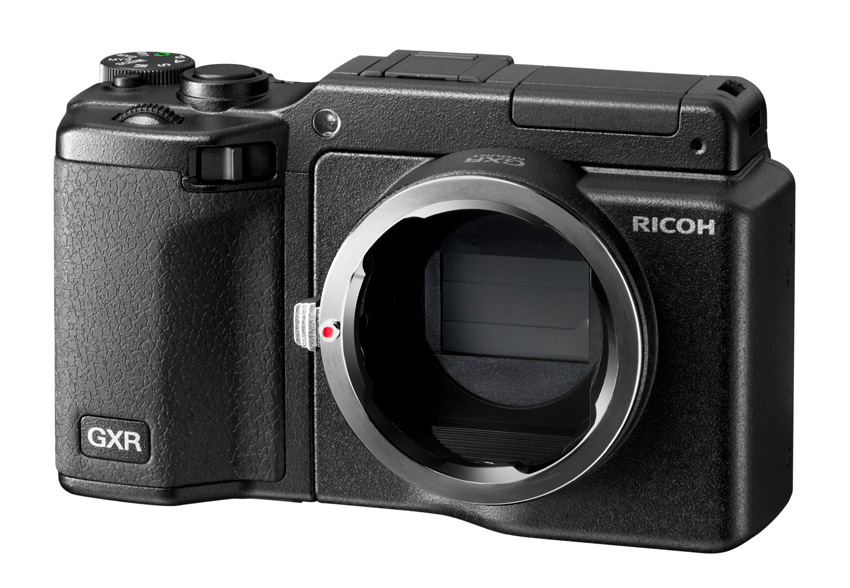
Michael has asked me to share some initial impressions of Ricoh’s new Mount A12 unit for their GXR system. What follows, then, is certainly not a review (or even a mini review) but rather a short collection of thoughts that have come to me after working with this new module for a couple of weeks so far.
This new Mount A12 – which is designed to take Leica M–mount lenses – may well be the most interesting and promising development in the Ricoh GXR system to date. In fact – and in particular – the GXR with Mount A12 may currently be, overall, one of the best and most versatile medium–sensor, compact camera options on the market for photographers who work seriously using zone focus. Rangefinder camera lenses, as a rule, feature well–marked manual focus rings and good to excellent mechanical focus ring action. They’ve long been important tools for photographers who work intentionally using zone focus – especially those who constantly and rapidly adjust their pre–set focus distances in response to the subject.
Until now, Ricoh’s GXR camera system has relied upon fixed modules that pair a given sensor with a given lens. That is to say they pair a piece of equipment that photographers often keep for many years – the lens – with a component that many prefer to replace (via new camera bodies) as technology improves – the sensor. There are arguments for the advantages of this fixed pairing but it can be a problematic arrangement (for reasons I discussed in the GXR article linked above).
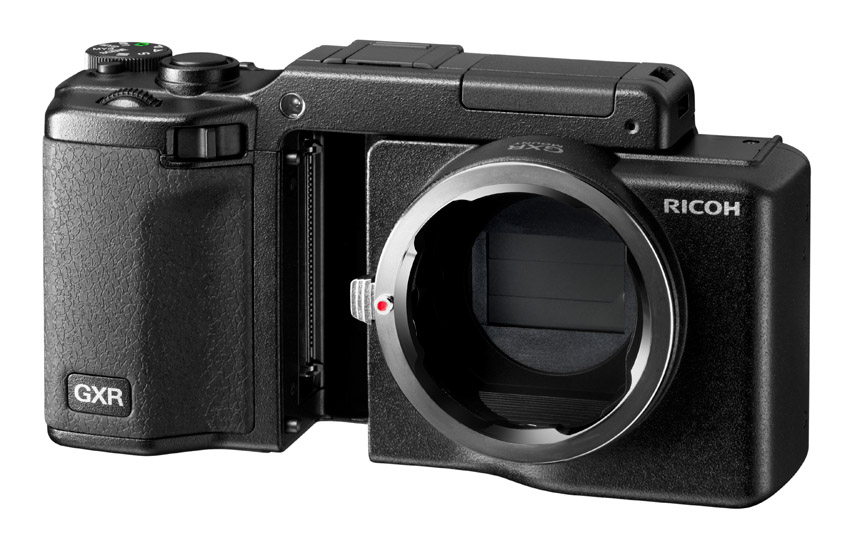
The fact that the GXR system now includes a lens mount module – of any kind – is important. But the fact that this module is designed to work with rangefinder camera lenses opens the Ricoh up to one of the broadest and most interesting ranges of small format camera lenses in the world. The Mount A12 uses a Leica M–mount and cameras with that mount, by design, can also use many LTM (Leica Thread Mount) lenses that date back as far as the early twentieth century. The range of visual characteristics possible with these different lenses (something I’ve often described as “lens drawing”) is vast.
But prior to this new module, which I’ll call the M–A12, the only digital cameras designed to work with such lenses have been the Epson R–D1 and the four Leica DRFs (M8, M8.2, M9 and M9–P). Those five models are all true rangefinder cameras of course – they use optical/mechanical rangefinder focusing systems that mechanically couple to RF lenses. The GXR/M–A12 doesn’t feature a rangefinder but its EVF system can be effective for focusing and it is a much less expensive camera than the Leicas or even a used Epson R–D1 (a camera that has long been out of production). The GXR body itself sells for about $350 while the Lens Mount A12 module sells for about $650 (both estimated street prices as of this writing). The former has been on the market for a couple of years now while the latter should be available this month (September, 2011).
For some time now, of course, it has been possible to mount an adapter on Sony NEX and various mFT cameras so that they can use rangefinder camera lenses. And certain rangefinder lenses, reportedly, perform fairly well in combination with those bodies. But the internal optical systems in these cameras (especially the micro–lenses) are – of course – designed to work well with NEX and mFT lenses (respectively). They aren’t designed for use with rangefinder camera lenses, per se, and so what I sometimes hear reported – from photographers who use these combinations – is that they are unhappy with some results in the outer zones of pictures (which can show luminance vignetting and/or decreases in resolution). The only combination like this that I’ve formally tested to date was the Panasonic G1 with a Leica 28/2.0 Summicron. And with that particular pairing, I saw a distinct decrease in resolution in the outer zones/corners as compared to results from the same lens tested on an Epson R–D1. Those were side by side tests done under controlled studio conditions. I have not yet tested a Sony NEX camera.
The degree to which this might be problematic will likely vary, of course, according to the lens used. The Epson R–D1, for example, was designed to work with RF lenses. Yet even in my early testing I saw strong vignetting when this camera was used with certain compact wide angle lenses like the Cosina Voigtlander 21/4.0 Color Skopar. The Epson uses a roughly APS–C size sensor and thus has a crop factor of about 1.5 X (much like the NEX cameras and the M–A12).
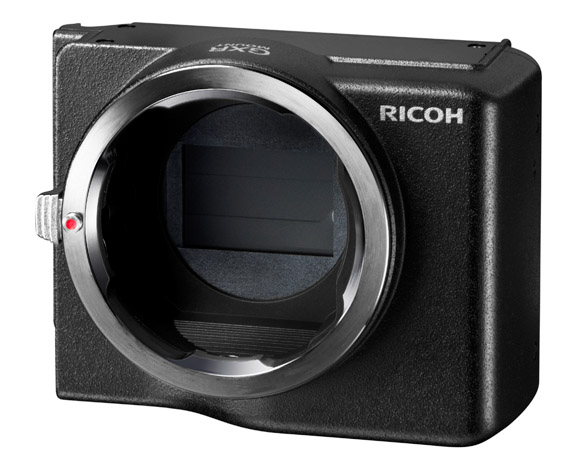
I’ve not yet done formal studio tests, of vignetting and resolution, with the M–A12 but I made a point of doing some early field work with a CV 21/4.0 Color Skopar mounted on the camera and the results (even in the outer zones) seem encouraging so far. Ricoh reports that the micro–lens arrangement in the M–A12 is specifically designed for rangefinder lenses. That makes the Ricoh, at least in theory, notably different from a camera that is designed to use its own lens system (even if the latter allows RF lenses to be mounted via an adapter).
Now, of course, rangefinder lens designs vary widely. Even on Leica’s M9, some lenses work better than others. But if a camera is specifically designed for RF lens use it is reasonable to expect that a variety of those lenses will work well with it. To know for sure, I plan to do formal studio tests of various RF lenses (especially compact wide angle models) to see, in particular, how they perform in the corners on the M–A12. Over time, it might also make sense to do some formal comparison tests of how the M–A12 and a NEX model – the NEX–7 for example – perform with a given lens.
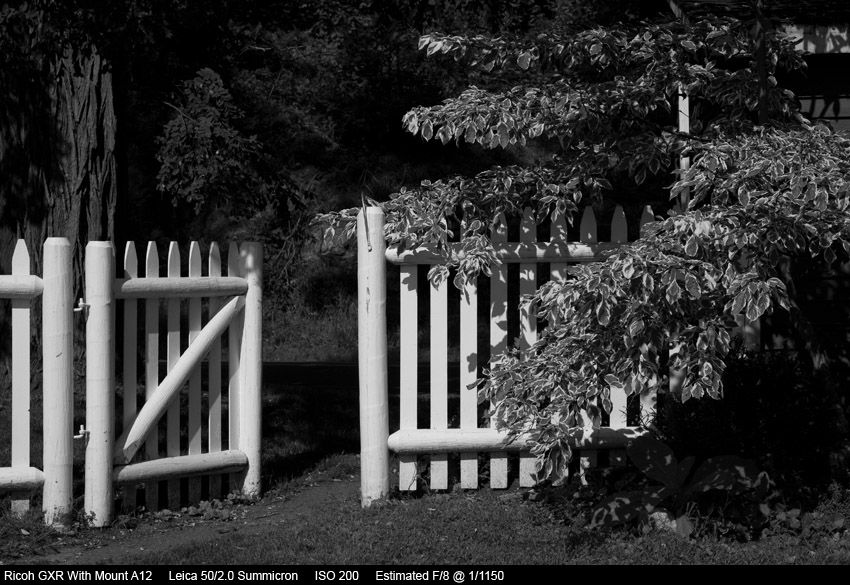
One other important aspect of the M–A12 is that it, according to Ricoh, uses no AA filter. AA filters, of course, reduce the incidence of color moire at the expense of fine detail. To the best of my knowledge, the M–A12 is the only APS–C Bayer Pattern sensor camera currently on the market that does not use an AA filter. The Sigma–Foveon cameras, of course, don’t need AA (low–pass) filters and thus don’t use them. But every other APS–C camera I can think of uses one – though the filter is weak in a camera like the Fuji X100 for example.
Without an AA filter, the M–A12 is in a better position to not only render fine detail – per se – but also to, in a broader sense, render the specific visual characteristics of whatever lens is mounted on it. A lens casts an image and an AA filter degrades that image by removing certain kinds of detail. It is no accident that the Leica M8, M9 and S2 do not use AA filters. The same can be said for various medium–format digital cameras and backs. Having worked with the M–A12 for a couple of weeks now I can say two things about the files. The first is that they indeed are detailed (given a high–resolution lens, etc). The second is that they, as one Ricoh beta–tester correctly suggested to me some time ago, “respect” the drawing of the lens mounted on the camera.
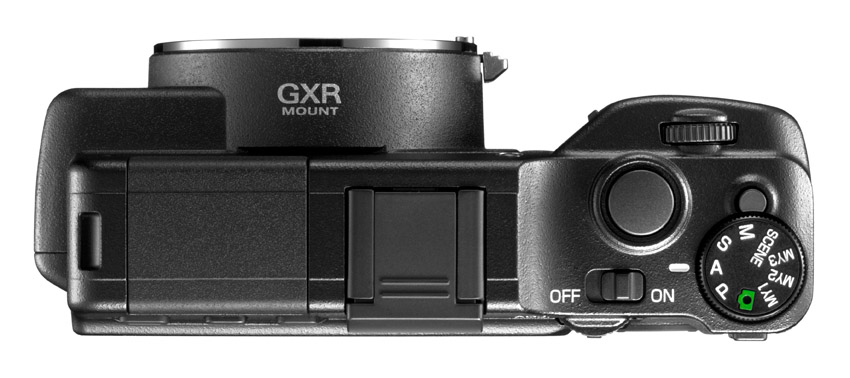
Almost parenthetically, I’ll add one more thought. Since the M–A12 has no rangefinder it must rely upon its EVF for manual focus by eye (as opposed to zone focus). Ricoh offers two “Focus Assist” options that, essentially, enhance the EVF image with a shimmering white outline that appears around objects with high local contrast. This is similar, it seems, to the “peaking” focus system used in many video cameras as well as certain still cameras from Sony, for example.
On the M–A12 I’ve found this focus assist system to be very useful. With it active, I’ve found that I can often accurately focus even a 50/1.5 lens (75 mm EFOV on the Ricoh) wide open with no image magnification. It’s not perfect – and there are pros and cons to using RF lenses for TTL (through the lens) focusing that I won’t go into here – but it does work.
So the M–A12 features a micro–lens arrangement designed specifically for rangefinder camera lenses as well as no AA filter. Those two aspects are worth noting. And of course, as of this new component, the GXR is now truly a modular camera system. If one gets used to working with the GXR camera body, certain finders, certain lenses, etc. it should be a simple matter in the future to change to a (let’s imagine) M–A16 module with 16 MP, wider dynamic range, lower noise, etc. One could keep the familiar camera controls, finders, lenses etc. while just swapping the lens mount/sensor module. The eye–level EVF is also a modular unit that could, in theory, be upgraded in the future to a higher resolution model (the current model could benefit from more resolution and better performance overall).
In other words, now that there is a lens mount module available (and I hope an AF lens mount module will also come in the future) the GXR’s modular concept is really starting to get interesting. This is a camera that certain serious photographers may want to take a close look at – especially if they want an affordable and very competent body for fast zone–focused work. It’s also a camera worth considering for anyone interested in using RF lenses with a TTL EVF system (for doing close–up photography, for example). It’s not a replacement for a true digital rangefinder camera but it does have its own advantages. Importantly, this is not just a camera module that can mechanically mount RF lenses – it is one that was designed specifically for them.
September, 2011
Editor’s Note: You can find a comprehensive “rolling review” of the GXR Mount A12 at Sean’s site, http://www.reidreviews.com. This is a subscription site but unique in its depth and perspective. In this digital age, Sean is that rarity – a camera reviewer who is also a photographer. Most cameras these days are reviewed by technologists, and they do a fine job of dissecting the bits, so to speak. But Sean does more – he helps photographers to understand what a camera is like as a tool for taking photographs, and to this end he brings both experience as a fine art and commercial photographer, as well as a love for fine equipment and its uses.
About Sean Reid
Sean Reid, an American, has been a commercial and fine art photographer for over twenty–five years. He studied under Stephen Shore and Ben Lifson and met occasionally with Helen Levitt. In the late 1980s he worked as an exhibition printer for Wendy Ewald and other fine art photographers. In 1989, he was the first American photographer to receive an artist–in–residence grant from the Irish Arts Council in Dublin, Ireland. His commercial work is primarily of architecture, weddings and special events. His personal work is primarily of people in public places. Having worked mostly with large format and rangefinder film cameras for many years, he now works primarily with the Leica M8.2, Leica M9 and Canon DSLRs. Most of his newest reviews and other articles can be found at Reid Reviews: http://www.reidreviews.com
You May Also Enjoy...
Lowepro DryZone
By: Steve Kossack Photograph Courtesy LoweproYou might remember this rather silly phrase from the 1960’s — but in retrospect maybe it wasn’t that silly after
